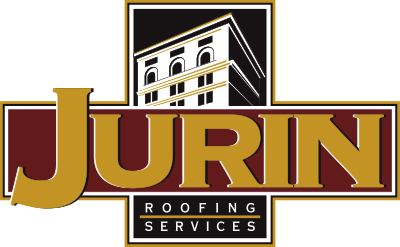Is your roof leaking? Have you had your roofing contractor to your building so many times that you are considering putting him in your will? Are you issuing employees raincoats at orientation? If you answered yes to any of these questions, you may be at a point where you should consider replacing your roof system. But while considering replacing your roof system you should also think about what common roof replacement issues you may face and how to possibly avoid them.
Replacing your roof system may seem intimidating. After all, next to the actual cost of constructing the building the cost of replacing the roof system may be one of the single largest expenditures that you can make. When replacing the roof, there are a lot of factors that you will want to consider. There are many unique roof replacement issues that are exclusive to each building and to each project. But there are some that are common among all projects.
Following are some common issues that are faced by building owners on all projects:
The longer the roof project takes, the more risk to the building and the building contents.
Roofing projects, in particular projects that require the complete removal of the existing roof system, present risk to the building and building contents because they take longer to complete. Projects that take longer expose the building and its contents to more opportunities for loss.

The longer the roof project takes, the more disruption there is to your operations in the building.
Roofing projects cause disruption to the building and the operations in the building. Loud noise, dust and debris all impact your operations. The key is to design a system that reduces impact on your building and the operations on the inside of the building allowing you to maintain your business.
The more parts and components required to complete a roof system, the more opportunity there is for human error.
Roofing systems that require more components and parts than others open the roof system to a greater chance for human error and mistakes. Mistakes made by installers are a big reason why roof systems fail over their lifetime. By eliminating complexity in roof systems and simplifying the installation, the potential for human error is greatly reduced.
How to Choose a Roof System
Okay, now you know some things to avoid when choosing the next roof system for your building. You may be feeling good about understanding some pitfalls in selecting your next roof. But, what systems can help you avoid these pitfalls? Great – good feelings are gone again. The first thing to remember is that there is no one roof system that is applicable in all situations. Each building and each project is different. The key is to design a roof system that meets these minimum needs and not over-engineer your project.
A system that helps to meet some of these demands is the RhinoBond system. RhinoBond is a system that incorporates either a TPO roof membrane or a PVC roof membrane induction welded to the surface of an insulation plate that is mechanically attached to the roof deck. Why is this important? Because it helps you as the building owner accomplish several key goals when installing a new roof system on your building.
Video demonstration of the RhinoBond roof attachment system.
Benefits of a RhinoBond Roof System Installation
- Rapid Installation. Due to the design of the RhinoBond system, the roof is covered very quickly. The system utilizes the surface of the plates that are used to attach the insulation to the roof deck as the surface to secure the roof membrane to the structure. This allows the professional roofing contractor to quickly cover the building and seal the roof to prevent moisture infiltration. This is particularly helpful in rainy climates such as Florida where sudden afternoon rain, especially during the summer, impacts roofing projects. This helps reduce the exposure to potential leaks during construction and impact on the operations of the business since the roofing project is completed faster than traditional systems.
- Reduced components. The RhinoBond system’s use of the top surface of the insulation plates as the point of attachment for the roof membrane reduces the amount of materials on the project site. Older in-seam fastened systems require separate fasteners to be placed in the seam of the membrane. Adhered systems require the use of adhesive after the insulation has been attached. Both of these systems create additional steps in the system installation that can become potential errors. The use of the RhinoBond system limits these potential errors. Another benefit to reduced components is reduced roof installation costs.
The Best Solution?
There is no one solution in the roofing industry that works for all situations. The RhinoBond system has great benefits to help reduce exposure to building owners and building content, but it may not be the best solution for your building. A professional roofing contractor can help you evaluate your site conditions and make recommendations as to the best design for your building. Remember to consider your requirements as a building owner and business operator and mention these key items as well as others that are particular to your specific situation.






